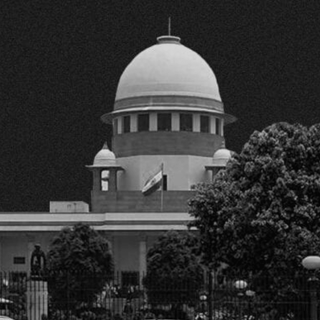
Here’s How Protest Slogans Help Grab the Attention of People, Those in Power
A slogan must both inform citizens of injustice and rally them together.

Over the last few months, India’s streets have resonated with chants of Azaadi(freedom); Hum dekhenge(We shall bear witness) from the revolutionary Faiz Ahmed Faiz poem; andKagaz nahi dikhayenge (We will not show our papers), all to protest the injustice of the Citizenship Amendment Act (CAA), the National Register of Citizens (NRC), and the National Population Register (NPR), which have been identified as a discriminatory basis for citizenship for marginalized castes and tribes, Muslims, trans individuals, and people with disabilities.
The ubiquity of these protest slogans — erupting across the country, from Delhi to Kerala — is important, as it aids the coming together of a nation against one common problem. The necessity of a protest slogan, beyond all, is to both inform those unaware of injustice and to rally those sympathetic to the cause together, as strength is always in numbers.
To understand how slogans work, an examination of its distant cousins — the war cry, and the brand tagline — is helpful. The protest slogan, unmanufactured, sincere and drawing from the power of dissent, succeeds when saying it aloud equals the adrenaline and spine-tingling sensation derived by yelling a war cry, creating an intense emotional connection to fighting for what’s right. Sloganeering as a tactic is also vital with respect to attracting the attention of like-minded individuals and playing a role in sending across a succinct, powerful message, which it holds in common with the act of ‘selling’ an idea. This makes protest slogans a vital part of dissent, as they are the main communicative tool of any movement.
Related on The Swaddle:
How Anti‑NRC‑CAA Humor Can Work as a Tool of Political Resistance
Sloganeering often draws from the arts, especially artwork and poetry, given both art forms’ abilityto succinctly, and with flourish, capture the ground realities of our times. The combination of succinctness and flourish also matters as it influences virality, which is pivotal to the modern protest’s success, giving the most grassroots movements a global tinge. Irish artist and lecturer Caoimhghin Ó Croidheáin divides political artwork into three categories, which include portrayal, promotion, and projection. Using this categorization for protest slogans — assuming that the creation of a slogan can be categorized as a labor of the arts — one can attempt to understand the evergreen viability of the protest slogan as a tool of dissent.
First, portrayal, according to Ó Croidheáin,”…describes events or situations that people find themselves in as a result of social or political structures. Any political perspective is implicit in the art but is also free-floating.” Take, for example, Wa-yabqa-wajh-o-rabbik (The Face of Your Lord) by Faiz Ahmed Faiz. The poem was initially written to protest the regime of Muhammad Zia-ul-Haq, the sixth President of Pakistan, who imposed martial law upon the country, governing it like a dictatorship. In more recent times, the verses continue to stay relevant, as the poem’s refrain — Hum Dekhenge (We shall bear witness) is the protesters’ manner of letting those in power know that they are bearing witness to the threats of discrimination just as they once did, and the bloodshed and violence inflicted upon the innocent, such as police brutality in Jamia Millia Islamia University (JMU) and Aligarh Muslim University (AMU).
Second, Promotion, according to Ó Croidheáin is the, “…ways and means towards the resolution of the problem are presented.” Varun Grover’s Kaagaz nahi dikhayenge (we shall not show our papers) posits further dissent as a solution. As compared to art or slogans categorized under portrayal, this category is more explicit, more tied to the event and more clear in its needs. If Hum Dekhenge is a war cry, Kaagaz nahi dikhayenge is the hyper-specific motto or tagline. Both the NRC and the NPR are legislations that will require individuals to show substantive documentation in order to prove their citizenship, ranging from birth certificates, refugee registration certificates, ration cards, land ownership records, and more. Often, people from marginalized backgrounds may not be able to produce such extensive documentation due to various legitimate reasons, which leaves them at risk of losing their citizenship. The poem’s meaning is peaceful, but firm — if you discriminate, we will stand in solidarity with those discriminated against. If you attempt to take away citizenship over some arrears in paperwork, we too, will not show our paperwork.
Finally, there is Projection, which is the “…art that takes disparate elements and then recombines them to form a new image. It is an art(work) that says ‘This is what could happen or could be if …,” according to Ó Croidheáin. Azaadi, or freedom is the utopian projection — the evolving end goal of the protest movement. “It’s simplicity is what makes it popular since one only needs to suffix it to any “evil” that must be fought. So it could be “bhookmari se — azadi” (From hunger — freedom!) or “Jaatwad se — azadi” (From casteism — freedom!), and so on,” writes Manavi Kapur for QZ. If Hum Dekhenge is a war cry, and Kaagaz nahi dikhayenge the motto, then Azaadi is the unifying idea that we’re all fighting for. The speculative, yet visionary nature of the word lends itself extremely well as a buoy in troubled times.
How we articulate distress in times of dissent is no temporary aid. From the Suffragette ‘Votes for Women‘ to the African American community’s ‘Black Lives Matter‘ to the Hong Kong protesters’ ‘Shameless,’ the slogans live on just as the need to dissent never dies. As those fighting for India’s independence said and those fighting for the removal of the CAA-NRC continue to say — Inquilab Zindabad. (long live the revolution).
Aditi Murti is a culture writer at The Swaddle. Previously, she worked as a freelance journalist focused on gender and cities. Find her on social media @aditimurti.
Related


Women Are Sole Founders of Less than 6% of All Indian Start‑ups: RBI
